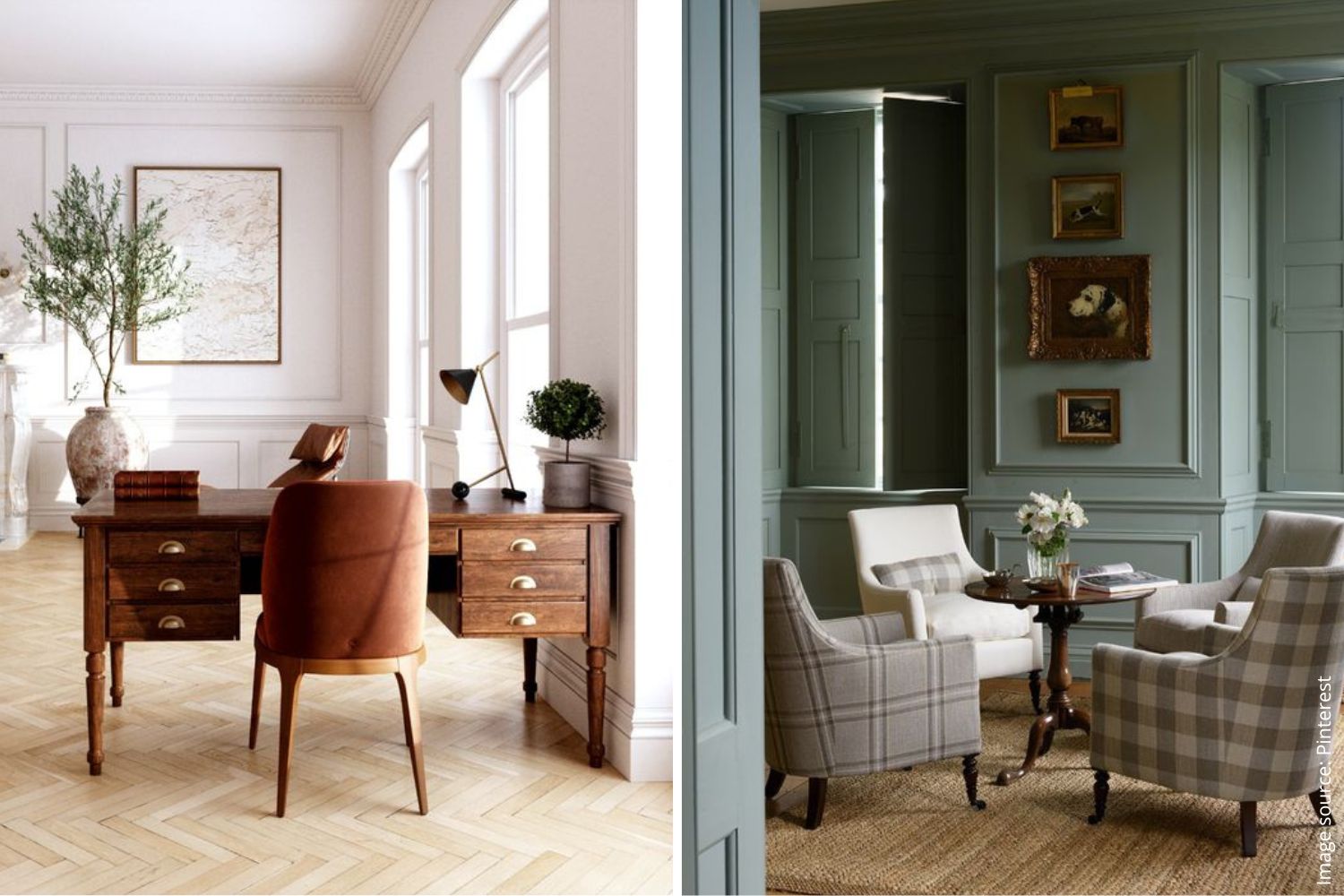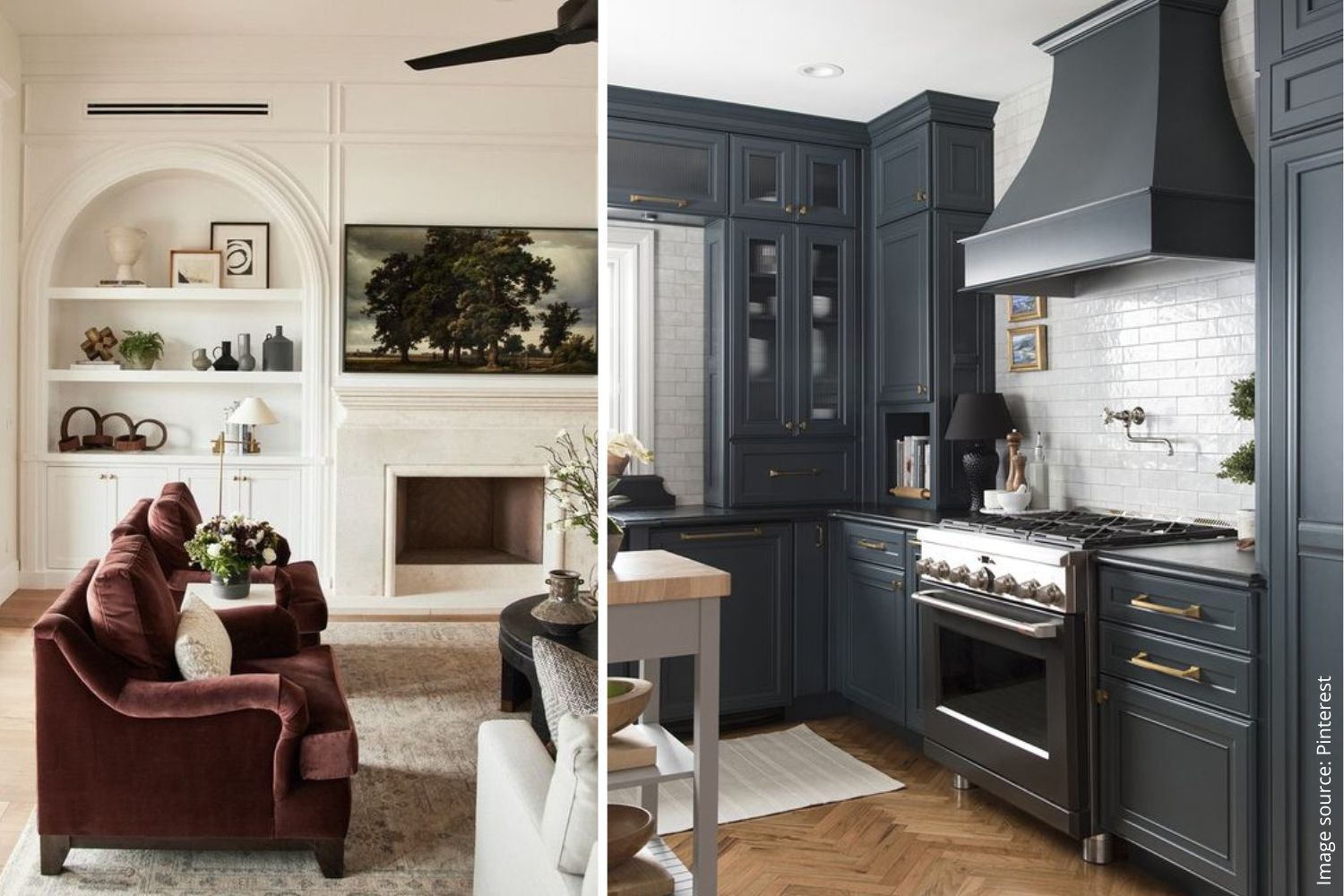New interior decor trends and styles pop up every year. Some are more popular than others, but nevertheless, all of them are offering something novel and intriguing. That is probably one of the reasons why we often forget about a timeless classic - a traditional interior. Other times we dismiss this interior style out of fear of creating a boring and somewhat dull home. But this couldn’t be further from the truth once you learn more about the traditional interior style. So here we will uncover the timeless beauty and vast possibilities of this interior decor style.

What is traditional interior style?
It’s not difficult to guess that traditional interior design is mainly inspired by what is understood as traditional. But what is actually hiding behind this word? Well, this interior decor style is using order, symmetry, and great attention to detail to create a space that is elegant, luxurious, and put together, yet cozy. Consistency is the key to traditional style and usually, this kind of interior feels balanced and harmonious, without any hints of chaos or anything that is too much.
When it comes to decor elements, a traditional interior favors a warm color palette, wooden elements, round contours, antiques, framed art, wall and ceiling moldings, and unique furniture that is ornate, big, and often decorated with tufted upholstery.

Some might say that a traditional interior looks familiar and even predictable. But if done right, the traditional interior maintains its calming sense of familiarity (which here is a good thing!) without being boring or out-of-date. Simply put, it should and does feel like home.
The origins of Traditional interior
Traditional interior style is mainly rooted in 18th and 19th-century European interior design, especially that of England and France with additional influences coming from the far east, particularly Japan. This inspired a strong emphasis on details and elegance and dictated the use of classic and even historical interior decorations like classical art, books, antiques, ornamented furniture and so.
However, the traditional interior is considered placeless and timeless, without a clear influence from one particular century, style or country. And although this style is strongly based on the past, it leaves space for modern details to find their place in this interior. Probably for these reasons it is popular all around the world even to this day. The traditional interior gives a sense of harmony, elegance, and comfort and is often chosen by those who want their home to be a relaxing place for escaping the loud and chaotic modern world. And it serves this purpose wonderfully.

Materials, forms, and textures
Since traditional interior style leans towards 18th and 19th-century interior decor, it's not difficult to guess we will not see any contemporary furniture, neon colors, or chromed interior details. Material-wise, the traditional style is dominated by what is natural or creates a sense of luxury:
- Wood. You will see a lot of wood in the traditional interior but unlike in rustic interior, it is less rugged and more neat and polished. Wood tends to be in darker tones and is used for floors, furnishings, and wood paneling.

- Metal. From door handles and faucets to candleholders and other decorations, silver, gold, brass, or oil-rubbed bronze are commonly used.
- Textiles. A distinctive feature of the traditional interior is the heavy use of fabrics - tufted furniture, cushions, and heavy classic drapes are a must. No windows should be left bare and decorative pillows are a great way to bring that homey feeling to the space. Traditional interior style favors textiles that are heavy, ornate, and opulent. When it comes to materials, think velvet, leather, silk, or heavy linen. Patterns like stripes, plaid, bolder ornaments, and decorative trim on curtains or cushions are often used and help to bring more life to the space.

- Furniture. When creating a traditional interior, you want to look for furniture that has a truly unique character, like ornate wooden shelves and tables, tufted upholstery chairs, and sofas in bold patterns.
Symmetry and balance: combining the elements
Now that we named some of the key elements of the traditional interior, you may wonder how to combine them to create a harmonious space.
Traditional interior style is all about symmetry, balance, and elegance. So when arranging a space, make sure the layout is symmetrical and without surprises. A great way to do so is to center a room around a big centerpiece, like a fireplace or a substantially-sized piece of art. Another fool-proof way to find symmetry and overall balance is to start with the biggest items in the room - the furniture. Once you decide what furniture will become the centerpiece of the room, plan a symmetrical layout and use this furniture as your starting point. The furniture you choose should also dictate the color palette, additional furnishings, decorations, and even the type of metal you want to use in the room.

There is another thing worth mentioning. Traditional interior decor aims to create a space that is elegant and cozy. So to soften the hard symmetry, curved lines and forms are preferred. From armchairs and sofas to bookshelves and rugs, rounded contours, carvings, and patterns will add a lighter touch to the room.
What colors should you use in the traditional interior?
Although conservative at the first sight, traditional interior style leaves plenty of space to experiment when it comes to color. Yes, highly contrasting tones like too much black and white or flashy colors should be avoided. But your options are not limited to only beige and grey.

If you want to create a balanced color palette, go with warmer neutral and pastel tones as your base. A good example of that would be light beige walls to set a light, welcoming tone in the room. Once you have your main colors decided, you may add accents of darker and rich tones like burgundy, deep blue, emerald green and so. Patterns are also welcomed in the traditional interior - you can incorporate bold stripes and plaid or add more delicate paisley, damask, or other flora-inspired patterns for a more romantic touch.
Here are some ideas for color combinations for the traditional interior:
- Softer color palettes will create an elegant yet relaxed atmosphere and are perfect for any room, especially the bedroom and living room. Go with a warm beige complemented by dusty blue and soft green or darker grey mixed with beige and a little pop of mustard for a balanced look.

- While a lot of black and white contrast should be avoided as it tends to dominate the space, some contrasting tones might actually enliven the room. Try mixing off-white with light grey and elevate the combination with accents of deep blue. Or go for light grey mixed with deep blue and hazelnut for a warm pop of color.

- Warm delicate hues are great when you want to create a lighter, slightly romantic space. Try soft rose and pastel yellow accompanied by color-coordinated ornaments or natural flax mixed with bolder hazelnut and beautifully complemented by flora-inspired patterns on walls, curtains, or cushions.

Antiques
Today you can find a great variety of new furniture and decorations that replicate the traditional 18th and 19th-century style. But before purchasing something new, pay a visit to your local antiques shop or thrift market. Looking for antique furniture, art, or decor elements is a great way to add original, aged details to your interior and oftentimes save. Look for truly unique pieces in good condition, made from natural materials.

However, you want to avoid turning your home into your own personal antique museum. We would recommend mixing new and old pieces and treating antiques as you would treat spices - the right amount will result in a wonderful and balanced taste, but if overdone they will ruin the whole dish. So instead of stuffing the room with antiques, look for pieces that would complement the interior. Good examples would include an antique armchair, a bookshelf or other small furniture, an antique tapestry, candleholders, chandeliers, rugs, paintings, and art.
Final touches: decor elements for a traditional interior
The beauty lies in the details so use them to give a beautiful finish to your traditionally styled space. The options here are endless as you are free to mix accessories from different periods and of different styles.

Framed paintings and photographs are a wonderful way to decorate any room or space. A calm landscape, a nature morte, or portraits of your loved ones, these framed pieces can make the space more personal. Crown molding and wainscoting are other common ways to decorate the walls in a traditional interior.
Ornate rugs are another staple of traditional interior decor, accompanied by cozy decorative cushions. Go for a new or vintage rug with floral patterns or Turkish-style ornaments. Use cushion covers in plain colors or elegant ornaments that are color-coordinated with the whole room.

For the kitchen and dining room decor, choose traditional porcelain dinnerware and simple yet high-quality table textiles that will look sophisticated and put together, like white or neutral-colored linen tablecloth.

Last but not least, floral arrangements are a wonderful way to elevate a traditional interior, no matter the room. This is also an opportunity to utilize original, decorative vases and create truly exceptional centerpieces.
Key elements to creating a traditional interior
- Traditional interior seeks to create an elegant yet cozy space where one would truly feel at home. Focus on symmetry to achieve a sense of luxury and balance and utilize curved lines to make the interior softer and cozier.
- Use neutral and pastel hues as your base colors when creating a traditional interior. Incorporate deep jewel tones like emerald green, ruby red, sapphire blue, and so through different decor elements and accessories. Bold patterns like stripes, plaid, and traditional ornaments are also welcomed in the traditional interior.
- From floor to furniture to accessories, only natural materials should be used. Choose wood in darker colors, metals like silver, gold, or brass, and natural textiles like silk, wool, velvet, linen, or leather.
- Furniture is heavy, curvy, and often features ornate woodwork and tufted upholstery.
- Before investing in new furniture or decor elements, visit your local antique store for truly unique antique pieces.
- Give your traditional style interior beautiful finishing touches with typical decor elements: framed paintings and photographs, crown molding and wainscoting, ornate rugs, decorative pillows, tapestry, elegant yet simple table linens, porcelain dinnerware, heavy draperies, and floral arrangements.
